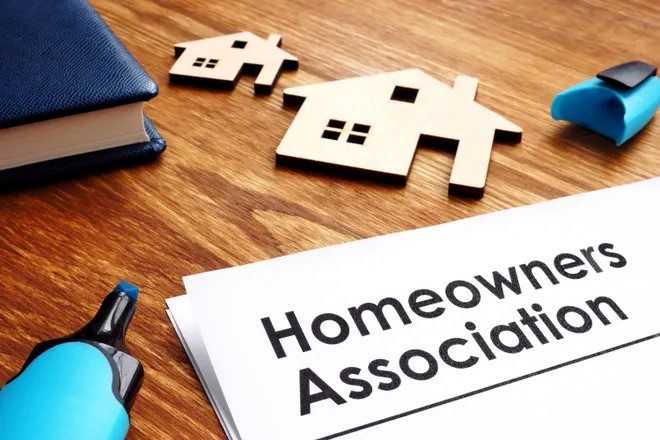Is HOA Responsible for Water Damage? Water damage in condominiums can be a complex and stressful issue, often leaving homeowners uncertain about who bears the responsibility for repairs. The complexities of condo living, especially in areas managed by Homeowners Associations (HOAs), necessitate a clear understanding of the division of responsibilities between the HOA and individual condo owners.
This knowledge is crucial for effectively managing water damage situations and ensuring that the right parties are held accountable. This guide delves into the roles and responsibilities of HOAs and condo owners in dealing with water damage, providing comprehensive insights into how to handle such incidents.
Understanding whether an HOA is responsible for water damage involves knowing the specific areas covered by the HOA and individual owner responsibilities.
Understanding HOA Responsibilities
Homeowners Associations (HOAs) are established to manage and maintain common areas within condominium communities. These areas typically include the building’s exterior, shared spaces like hallways and lobbies, and amenities such as swimming pools, fitness centers, and landscaped grounds.
One of the primary roles of an HOA is to ensure that these common areas are well-maintained and repaired as needed. When water damage occurs in these shared spaces, such as from a leaky roof or a burst pipe in a common wall, the HOA is generally responsible for addressing the issue. This includes coordinating repairs and covering the costs associated with fixing the damage.
In states like Massachusetts and California, HOA responsibilities can also extend to the building’s structure and shared systems, including main plumbing and electrical systems. It’s essential for homeowners to understand the specifics of their HOA’s responsibilities, which are usually outlined in the association’s governing documents, such as the Covenants, Conditions, and Restrictions (CC&Rs).
These documents define what areas the HOA is obligated to maintain and repair and what falls under the purview of individual unit owners.
Homeowner Responsibilities
While HOAs handle common areas, individual condo owners are typically responsible for the interior of their units. This responsibility includes maintaining and repairing the interiors, such as walls, floors, ceilings, and personal property.
Homeowners must also manage any plumbing and electrical systems that serve only their unit, including appliances like washing machines and water heaters. If water damage occurs due to a malfunctioning appliance or a plumbing issue within the unit, the homeowner is usually responsible for the repairs.
It’s crucial for homeowners to understand that their insurance policies should cover interior damages and personal belongings. Condo insurance, also known as HO-6 insurance, typically covers “walls-in” property, protecting the interior structure, personal property, and liability for accidents within the unit.
This coverage can be vital in cases where water damage is caused by issues originating within the condo unit itself, such as a burst pipe under the sink or a malfunctioning washing machine.
Determining Fault and Responsibility
Determining who is responsible for water damage in a condo can be complex and often depends on the source and location of the damage. For example, if water damage is due to a burst pipe in a common area, the HOA is generally responsible for the repairs. However, if the damage is caused by a leak from a homeowner’s appliance, the responsibility falls on the unit owner.
In some cases, disputes can arise over whether an area is considered a common area or part of an individual unit. For instance, walls shared between units or pipes running through common areas can create grey areas in responsibility. It’s essential to review the HOA’s governing documents and seek clarification from the HOA board or a legal professional if there are uncertainties.
Insurance Considerations
Insurance plays a critical role in covering water damage in condos. The HOA typically carries a master insurance policy that covers the building’s structure and common areas. However, this policy often does not extend to individual units’ interiors or personal property. Therefore, condo owners need their own insurance policies to cover these aspects. This insurance can cover damages from incidents like plumbing leaks, appliance failures, or other internal water-related issues.
Condo owners should carefully review both the HOA’s master policy and their individual condo insurance to understand what is covered and where gaps might exist. This understanding can prevent disputes and ensure that owners are adequately protected in the event of water damage.
Steps to Take When Water Damage Occurs
If water damage occurs in a condo, it’s crucial to act quickly to mitigate the damage. The first step is to identify the source of the water and stop it if possible. Homeowners should immediately report the damage to the HOA if it involves common areas or shared systems. It’s also essential to document the damage with photos and detailed notes, as this can be helpful when filing insurance claims or resolving disputes with the HOA or neighbors.
Homeowners should also contact their insurance company to report the damage and start the claims process. In cases where the source of the damage is unclear, or there is a dispute about responsibility, it may be necessary to involve a professional inspector or a legal expert to assess the situation.
Conclusion
Water damage in condos can be a complex issue, requiring a clear understanding of the responsibilities of both the HOA and individual homeowners. By knowing what areas are covered by the HOA and what falls under personal responsibility, condo owners can better navigate these situations and ensure proper repairs are made. Insurance considerations are also crucial, as they can significantly impact the financial burden of water damage. By staying informed and prepared, condo owners can protect their investments and maintain a harmonious living environment in their communities.
FAQ Section About: Is HOA Responsible for Water Damage?
What does an HOA’s master insurance policy typically cover?
An HOA’s master insurance policy usually covers the building’s structure, common areas, and shared systems. This can include roofs, hallways, elevators, and plumbing systems that serve multiple units. However, it generally does not cover the interiors of individual units or personal property, which is why condo owners need their own insurance policies.
Who is responsible if a pipe bursts in a shared wall?
Responsibility for a burst pipe in a shared wall often depends on the specific circumstances and the HOA’s governing documents. Typically, the HOA is responsible for maintaining and repairing pipes in common areas or shared walls. However, if the pipe only serves one unit, the homeowner may be responsible.
Can a condo owner be held liable for water damage in a neighbor’s unit?
Yes, a condo owner can be held liable if their negligence or failure to maintain their unit causes water damage to a neighbor’s unit. For example, if an owner’s appliance leaks and causes damage to a neighboring unit, the responsible owner may be liable for repair costs.
What should I do if my HOA refuses to cover water damage that I believe is their responsibility?
If an HOA refuses to cover water damage that you believe is their responsibility, review the governing documents to ensure you understand the rules and responsibilities. If the dispute persists, consider seeking advice from a legal professional who specializes in condo law. They can help determine whether the HOA is obligated to cover the damages and assist with resolving the dispute.
Do I need additional insurance for water damage?
It’s a good idea to have additional insurance for water damage, especially if your condo unit contains valuable personal property. Standard condo insurance policies often include coverage for water damage from internal issues like plumbing leaks or appliance failures, but may not cover flooding or damage from external sources. Reviewing and understanding your policy’s coverage is crucial to ensure adequate protection.

